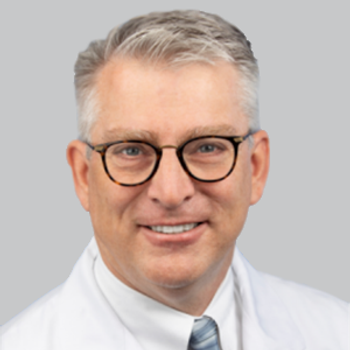
Rare Diseases Awareness and Educational Needs / Conscientização sobre doenças raras e necessidades educacionais
Dr Marcelo Kerstenetzky highlights areas of unmet needs in rare diseases education for healthcare professionals in Brazil. Dr Marcelo Kerstenetzky ressalta áreas de carência na educação sobre doenças raras para profissionais de saúde no Brasil.
Episodes in this series

John Brandsema, MD: In this discussion of rare disease and education, a very important aspect is making people aware of SMA [spinal muscular atrophy] as a diagnosis. Can you speak about this, Dr Kerstenetzky? How is this being addressed in Brazil?
Marcelo Kerstenetzky, MD: We have several problems today, and the initial problem is that rare diseases are not included in the curriculum of healthcare schools at the universities. Another point is the lack of students in referral centers, to become familiar with rare diseases. Students at the universities are trained to always look for what is common and not what is rare. But, we can only diagnose what we can think of, and many doctors are under the false impression that they will never encounter a patient with a rare disease. This makes it very difficult to recognize the warning signs. I think we have a debt with the past, we've always learned to only think about rare disease when the investigation of the common diseases had been exhausted. But many times, during the investigation of the common disease, warning signs of a rare disease can be perceived, and we can investigate in parallel and reduce the great distance between initial symptoms and diagnosis. So, it is necessary to change this approach so that the topic of rare diseases is included in the universities. If not, we are going to continue with that multitude of diagnoses. How can a healthcare professional make a diagnosis of a disease that they have never heard of? It is very difficult when, after years, patients get the diagnosis. They question the doctor who made the diagnosis, ‘Why didn't anyone think of this possibility before? I have been looking for a diagnosis for 7, 8, 9, 10 years, I have been to several specialties, seen several professionals, and no one thought of the possibility of a rare disease.’ So, we must change this context. Once again, I repeat, to emphasize the need for awareness that the rarity of a disease does not exclude its existence. A rare disease may be right next to us, we just need to stop and think. You can only diagnose what you can think of. So, if you don't look for it, you won't find it. If you can’t find it, you won’t have the ability to offer a treatment for these patients.
Transcript Edited for Clarity
John Brandsema, MD: Nessa discussão sobre doenças raras e educação, um aspecto muito importante é trazer informação às pessoas sobre o diagnóstico da AME [atrofia muscular espinhal]. Você pode falar sobre isso, Dr Kerstenetzky? Como isso está sendo tratado no Brasil?
Marcelo Kerstenetzky, MD: Nós temos vários problemas, e o problema inicial é que doenças raras não são inseridas nos currículos das escolas de saúde nas universidades. Outro ponto é a falta de estudantes nos centros de referência para que eles estejam familiarizados com as doenças raras. Os estudantes foram treinados nas universidades a sempre procurer o que é comum, e nunca o raro. Mas nós só vamos diagnosticar aquilo sobre o que conseguirmos pensar, e muitos médicos tem a falsa impressão de que nunca irão encontrar um pacience com uma doença rara. Isso dificulta muito o reconhecimento dos sinais de alerta. Eu acho que temos uma dívida com o passado, nós sempre aprendemos que só poderíamos pensar na doença rara quando se esgotasse a investigação da doença comum. Mas muitas vezes, durante a investigação de uma doença comum, alguns sinais de alerta para uma doença rara podem ser percebidos, e nós podemos investigar em paralelo e diminuir essa grande distância entre os sintomas iniciais e o diagnóstico. Então, é necessário que mudemos essa visão para que o tema ‘doença rara’ seja inserido nas universidades. Senão, vamos continuar com aquela odisseia de diagnóstico. Como um profissional de saúde fará um diagnóstico de uma doença que ele nunca ouviu falar? É muito difícil quando, após anos, pacientes tem o diagnóstico. Eles questionam o médico que os diagnosticou, ‘Por que ninguém pensou nessa possibilidade antes? Eu estou há 7, 8, 9, 10 anos buscando um diagnóstico, já fui a vários especialistas, consultei com diversos profissionais, e ninguém pensou na possibilidade de uma doença rara.’ Então, precisamos mudar esse contexto. Mais uma vez, eu repito, para enfatizar a necessidade de se conscientizar que a raridade de uma doença não exclui a sua existência. A doença rara pode estar ao nosso lado, nós só precisamos parar e pensar. Você só vai diagnosticar o que você pensar. Então, se você não procurar, não irá encontrar. Se não encontrar, não conseguirá oferecer tratamento a esses pacientes.
Transcrição editada para maior clareza
Newsletter
Keep your finger on the pulse of neurology—subscribe to NeurologyLive for expert interviews, new data, and breakthrough treatment updates.
































